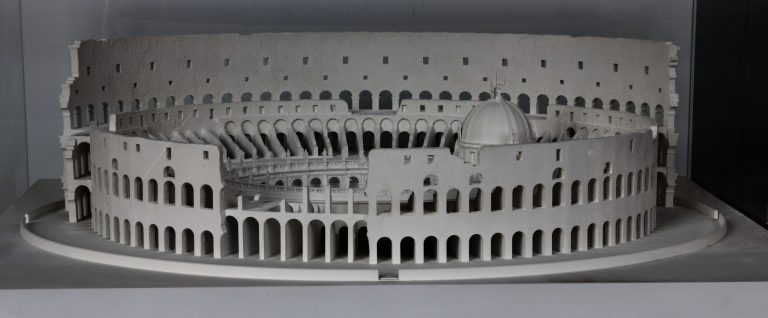The Colosseum’s consecration as place of worship and shrine to the Christian martyrs
Over the course of the 1600’s, the popes promoted plans to consecrate the entire amphitheater as a place of worship, with the important secondary goals of pushing back the rampant lawlessness that affected the surrounding area, preventing improper uses of the structure and slowing its gradually worsening state of decay. With this in mind, Clement X proposed to celebrate the 1675 Jubilee in the Colosseum, consecrating the monument to the memory of the Christian martyrs. For the occasion, a cross was erected in the center of the arena and a wall painting of the city of Jerusalem was added to the arch of the so-called Porta Triumphalis.
In the same period, plans to construct a chapel in the center of the arena went forward, initially commissioned to Gian Lorenzo Bernini but later drawn up by Carlo Fontana. The idea was to build a monumental circular sanctuary on the oval-shaped amphitheater’s long axis, integrated into the existing structure through a portico running along its perimeter. The project never came to fruition, although preparatory drawings have been preserved and models have been made from these documents. In any event, the Colosseum continued to be used as a stone and materials quarry up until the mid-18th century.
In 1744, Pope Benedict XIV issued an edict prohibiting the desecration of the monument and, for the 1750 Jubilee, he consecrated the arena to the memory of the Passion of Christ and of the Christian martyrs, commissioning the 14 shrines of the Stations of the Cross along the arena’s perimeter.






